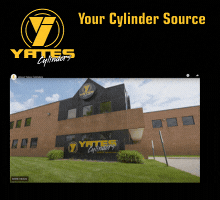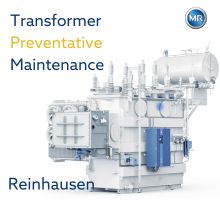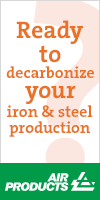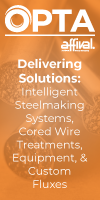ArcelorMittal Kryvyi Rih Repairs Blast Furnace in Record Time
05/22/2013 - ArcelorMittal Kryvyi Rih, the largest producer of rolled steel in Ukraine, has finished the overhaul of its blast furnace number seven after just 26 days. A total of 17 operations were performed on the blast furnace.
ArcelorMittal Kryvyi Rih, the largest producer of rolled steel in Ukraine, has finished the overhaul of its blast furnace number seven after just 26 days. A total of 17 operations were performed on the blast furnace.
“In April we accomplished a category two overhaul repair of blast furnace number seven. During this period, the furnace remained idle for four weeks (19 days of repairs and seven of commissioning operations). We were using only two blast furnaces in this period, but this did not affect our production performance in April,” said Paramjit Kahlon, ArcelorMittal Kryvyi Rih chief operating officer.
Kahlon added that cold repairs to the two-bath steelmaking vessel in the open-hearth plant and repairs to the return-stream apron conveyor number one in the sinter shop number one also started in April.
The blast furnace repair started with the skull breaking process. ‘Skull’ is a heat-proof mass often formed as the result of negative interaction between the charge and refractory lining. The biggest part of the project came with the replacement of the charging equipment - this will prevent skull formation on the blast furnace in future. A double-bell distributor with a calibration device was also installed in the blast furnace - a first for the plant. This will reduce coke consumption equivalent to around 25 kg per tonne of hot metal.
Other repair processes also included:
- Replacement of the closing machine for the iron tapping holes
- Cooling plates on the blast furnace stack
- Repairs and relining of hot-metal runners and scum gutters
- Implementation of rust protection on high-line bunkers
- New metal structures on the bin trestle
- Cleaning of blast furnace structures
- Replacement of the water supply system, aspiration, ventilation, and water wash
- Repair works on screens, replacement of skip hoists
Vladislav Listopadov, sinter and blast furnace department director at ArcelorMittal Kryvyi Rih added that the team made extensive preparations for the repair in order for the project to run smoothly: “This project was completed successfully and on time thanks our technical and organisational expertise and the team work between our maintenance team and our contractors. A special focus was put on following all the health and safety rules during this repair, because it involved simultaneous works in and out of the furnace, complex disassembling and assembling, dangerous gas work and working at heights. With the installation of Tarasov’s calibrator, we expect to reach a reduction of coke equivalent to around 25 kg per tonne of hot metal. This will lead to cost reductions and an increase in the competitiveness of our plant's products.”
Similar overhauls have taken up to eight months in the past. However this overhaul, which was on a bigger scale, was completed in 20 days.
Improvement through training
ArcelorMittal Kryvyi Rih recently held training sessions on keeping temperatures stable in blast furnaces. Part of the course was dedicated to ‘chilled hearths’, one of the most serious disruptions that can happen in a steel plant. The training sessions lasted for three days and gathered 18 blast furnace operators at Kryvyi Rih.
“Training will help improve the efficiency of blast furnace management which in turn will reduce coke consumption in the blast furnace process, achieve stable and low silicon content in hot metal and reduce overall cost of hot metal production” said Vincent Cholet, chief technology officer of ArcelorMittal Kryvyi Rih.
Cost saving potential
Blast furnaces have been recognised as an area that can provide significant cost savings for ArcelorMittal’s new US$3bn management gains plan. The plan was presented at the Investor Day 2013, on 15 March, by Group Management Board member Louis Schorsch. Blast furnaces have been made a priority for the 2013–2015 plan with savings expected through:
- Reliability
- Management at the end of the campaign
- Fuel rate
- Productivity
- Raw materials flexibility
Other priorities addressed in the gap analysis for cost saving by process, besides blast furnaces, are:
- Cold rolling mill and HDG
- Hot strip mill
- Long rolling mills
- Steel shops
Yield, productivity, and energy are recognized as the main drivers for cost savings in the gap analysis.



-(220-x-200-px)-(130-x-130-px)-(220-x-200-px).jpg?lang=en-US&ext=.jpg)
Veolia.gif?width=200&height=200&mediaprotectionhash=4deca34a0d5a00013b5a0ccdc2dcf98fd2c17aabb57eb7bbb27200552f29c247&ext=.gif)





